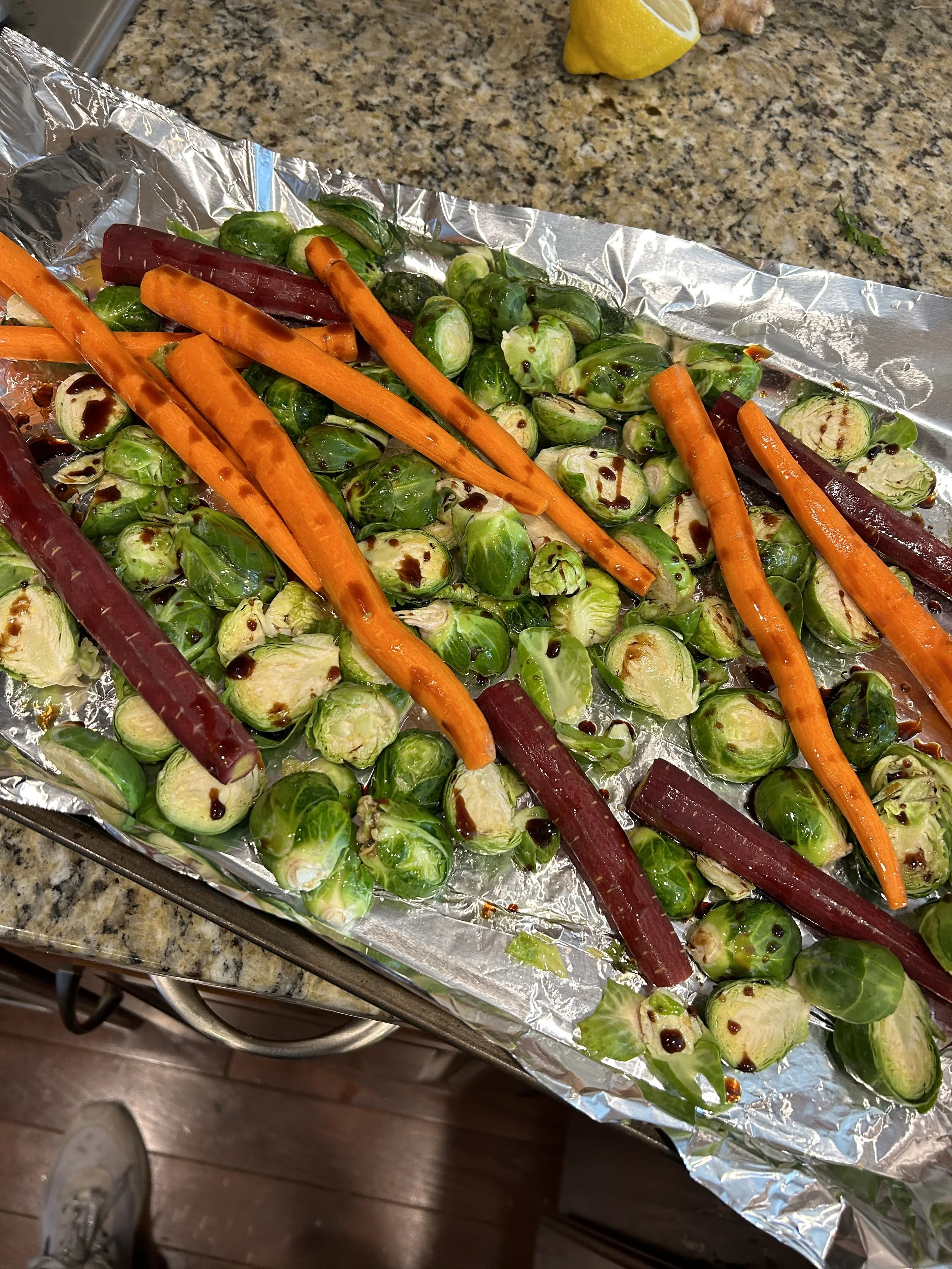Roasting Root Vegetables the Ayurvedic Way
Root vegetables are some of the most grounding, nourishing foods you can eat—especially in the fall and winter. According to Ayurveda, fall is dominated by Vata dosha (dry, cold, and erratic). The sweet, heavy, and stabilizing qualities of root vegetables help pacify Vata and bring warmth and stability to body and mind.
Roasting root vegetables is not only delicious—it also enhances their natural sweetness, makes them easier to digest, and aligns perfectly with Ayurvedic principles of seasonal eating.
Ayurvedic Qualities of Root Vegetables
Grounding (Stability): Their earthy energy helps anchor Vata’s airy tendencies.
Sweet Taste (Madhura Rasa): Nourishing and soothing for both Vata and Pitta.
Heavy (Guru Guna): Provides stability, countering lightness and dryness.
Warming (Ushna Virya): Supports digestion and balances Kapha’s sluggishness.
Sustaining: Rich in complex carbohydrates and fiber, they provide steady energy.
Seasonal Alignment: Harvested in late summer and fall, perfectly timed for grounding seasonal balance.
✨ Examples: Carrots, sweet potatoes, and beets are sweet and grounding. Radishes and turnips are more pungent, stimulating digestion.
Preferred Cooking Techniques in Ayurveda
Cooking methods can influence how root vegetables affect your digestion and doshas:
Roasting: Brings out sweetness and warmth (ideal for Vata and Kapha).
Steaming: Gentle, retains nutrients, suitable for all doshas.
Sautéing: Enhances digestibility when paired with warming spices.
Boiling: Best in soups and stews with digestive spices.
Mashing: Comforting, nourishing, grounding.
Grating (Raw): Refreshing for Pitta, but can be heavy for Vata/Kapha.
My Favorite Method: Roasted Root Vegetables with Balsamic
Last weekend, I baked a tray of locally farmed root vegetables with olive oil and a cherry balsamic vinegar I found at Whole Foods. Seasoned simply with salt and pepper, they were sweet, caramelized, and utterly delicious. This method is easy, versatile, and family-friendly.
Simple Roasted Root Vegetables Recipe
Ingredients
2–3 cups mixed root vegetables (carrots, beets, parsnips, sweet potatoes, turnips, radishes)
2–3 tbsp olive oil (or ghee for deeper flavor)
2 tbsp balsamic vinegar (I love cherry balsamic)
Salt & black pepper, to taste
Instructions
Preheat oven to 400°F (200°C).
Wash and chop vegetables into even cubes.
Toss with olive oil, balsamic vinegar, salt, and pepper.
Spread evenly on a baking sheet.
Roast for 25–30 minutes, stirring halfway through, until tender and caramelized.
Serve warm as a side dish, or toss into grain bowls and salads.
Ayurvedic & Health Benefits
Vata Balance: Sweet, heavy, and grounding—perfect for autumn dryness.
Pitta Balance: Gentle and soothing, especially when roasted with cooling oils like olive oil.
Kapha Balance: Lightened by roasting and vinegar, which counter Kapha’s heaviness.
Nutritional Benefits: High in fiber, antioxidants, and minerals; supports blood sugar stability and digestive health.
This dish is both healing and comforting, making it a seasonal staple for fall and winter.



